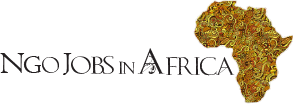This company has no active jobs
Ethiopia’s agriculture is still characterized, for the most part, as low-input/low-output subsistence agriculture. The level of technology is generally basic, and productivity per hectare is perhaps one of the lowest in the world. Even in high agricultural potential areas of the country, in which crop-based systems predominate and population densities are highest, productivity is constrained by lack of knowledge, lack of finance, poor postharvest handling and poorly developed markets.From 1979/80 to 1991/92, annual food crop production ranged between 4.87 and 7.81 million tons, whereas per capita food production for the same years declined from 174 kg/year in 1979/80 to 92 kg/year in 1991/92.
The initiation of the Agricultural Development-Led Industrialization (ADLI) policy by the Ethiopian Government in 1992 created a policy environment conducive for growth in the agricultural sector. In 1993, the Sasakawa Global 2000 Ethiopia (SG 2000-Ethiopia) Country Program was established as an “implant” into the Ethiopian national extension system, under the leadership of then SAA Regional Director, Dr. Marco Quinones. As in all its country programs, SG 2000-Ethiopia sought to introduce new approaches to extension aimed at increasing farm-level productivity, especially of smallholder farmers.


